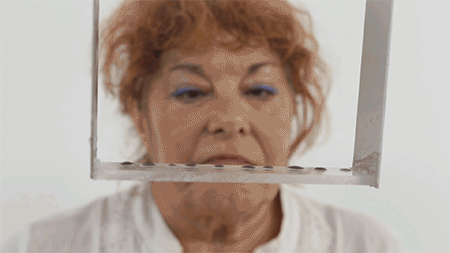LITAL RUBINSTEIN










Cold Sweat Machine
2018
Installation and video, 900x60x125
In cooperation with Aviva Daum Marks
Curator: Hagar Brill
Hanina Gallery, Tel Aviv
The human body is a wondrous, well-oiled machine. It is an organism that serves as a shelter for countless processes, systems, and mechanisms operating simultaneously in a complex and coordinated manner. But what happens when one of these mechanisms malfunctions?
Cold Sweat Machine by Lital Rubinstein and Aviva Daum Marks is a multi-functional system built on the principle of a chain reaction. It seeks to trace the process experienced by a person undergoing a panic attack. During such an attack, certain bodily systems cease to function properly, disrupting regular processes: difficulty breathing, muscle tremors, and chest tightness signal that something terrible is happening within us. The cold sweat produced by our body during a panic attack is meant to cool the body and calm us down. However, paradoxically, it also heightens our awareness of the panic, intensifying its effects.
The intricate machine, sprawling across the gallery space, serves as a mechanical, pseudo-scientific metaphor for a panic attack. The process it enacts mimics the systemic failure occurring in the body during an attack: starting with a sudden internal frequency that causes trembling and bubbling, leading to an outburst of paralyzing fear, and culminating in the body being covered in cold sweat, attempting to regain control. The fluids circulating through the machine are distilled into “clean,” transparent droplets, designed to restore the body to its functional state. Yet not all droplets manage to purify. Some are expelled from the machine directly from the anxiety itself—grey in tone, containing the chemical essence of fear.
In the accompanying video work, Rubinstein and Daum Marks document a process of research, extraction, and preservation of that fear. In the video’s first part, the anxiety-laden droplets pass through an extraction system. A diligent lab technician processes the greyish liquid through evaporation and heating, ultimately yielding a pitch-black essence.
This ominous liquid is later used for human experimentation. Test subjects are invited to approach and smell the black droplets, after which they undergo a series of tests: pulse monitors are attached to their fingers, a metal strap around their arm tracks the raising of their hairs, sweat collected from their foreheads is absorbed into cotton pads, and their trembling is recorded through indicator lights at the base of test rigs, measuring pedal movements under their feet. Finally, the experimenter moves among the subjects to extract scent molecules from their underarms, examining the chemical changes in their sweat caused by exposure to the essence of fear.
The ultimate fear essence, proven effective, returns to the lab for the production of a fear-scent spray. The black concentrate is diluted with alcohol and packaged in a spray bottle, now branded as “Anxiety Perfume,” displayed on shelves in the gallery, ready for precise application.
The act of preserving and testing fear droplets under laboratory conditions mimics the desperate human attempt to control and manage fear. As an involuntary and sudden sensation, fear is inherently destabilizing. On the one hand, it is meant to protect us from immediate danger. On the other, it can become a driving force that dictates extreme behavioral patterns. Moreover, fear is not merely an individual sensation—it can transform into a collective mindset, seeping into us as a group, shaping our private and collective lives alike.
The simulated laboratory conditions, with their cold, orderly sequence of automated actions, raise questions about human helplessness in the face of anxiety. Can we control fear, or does it control us? The Cold Sweat Machine confronts us with our fragile reality: while we may believe our bodies are under controlled regulation, it reminds us that the potential for malfunction always lies within us.
Let me know if you’d like adjustments or further refinements!